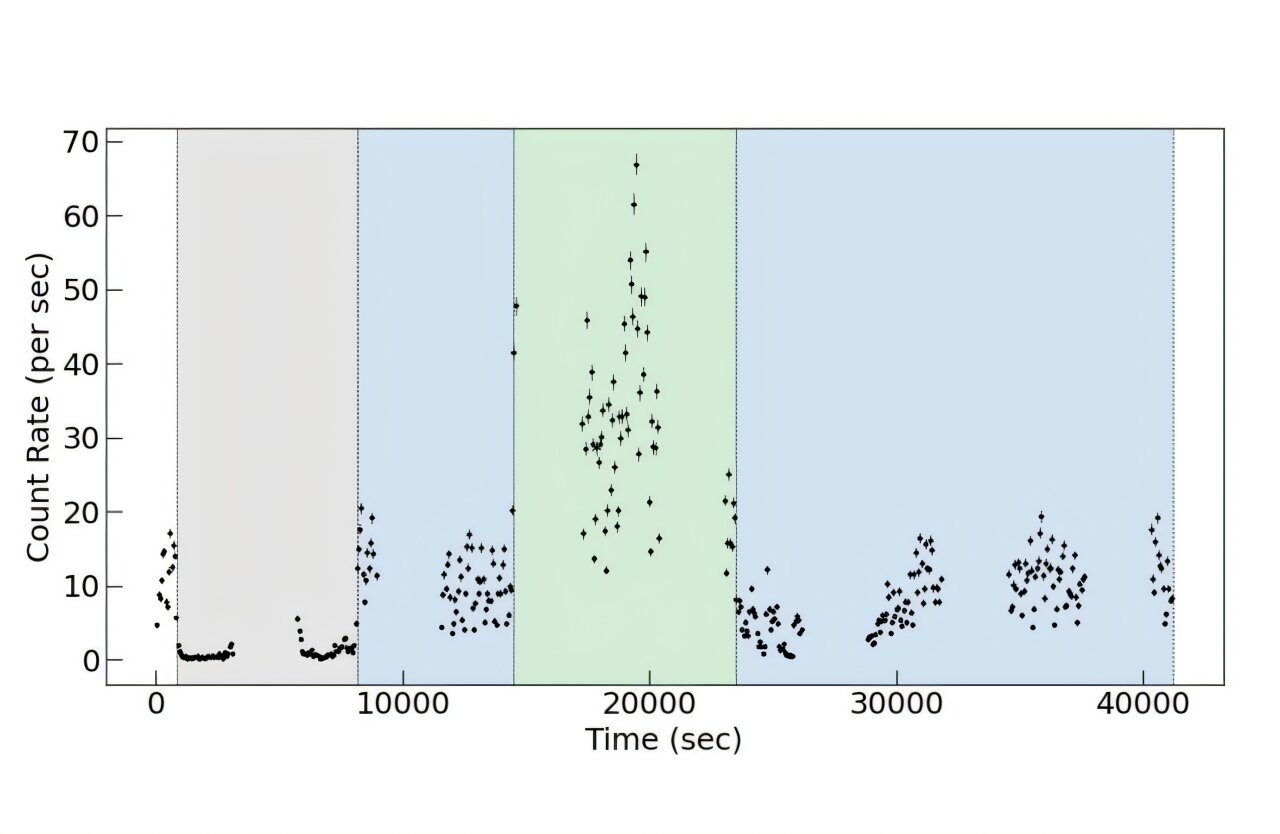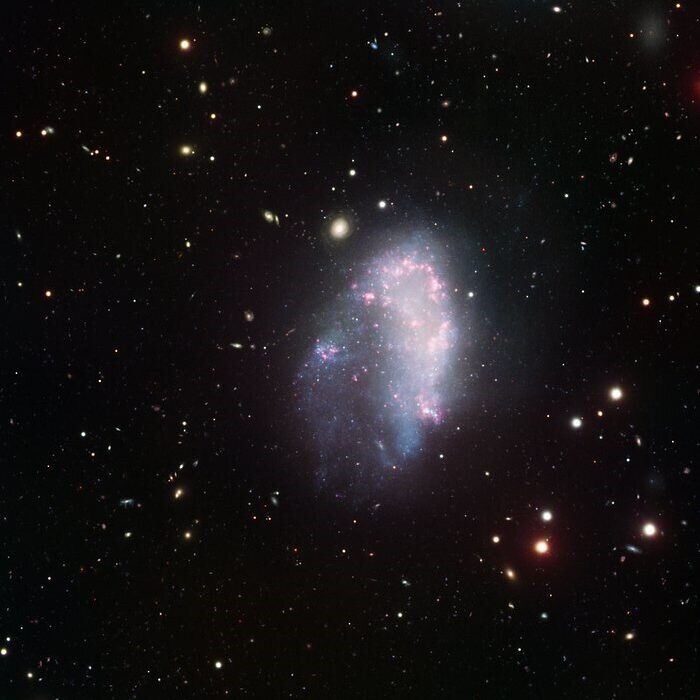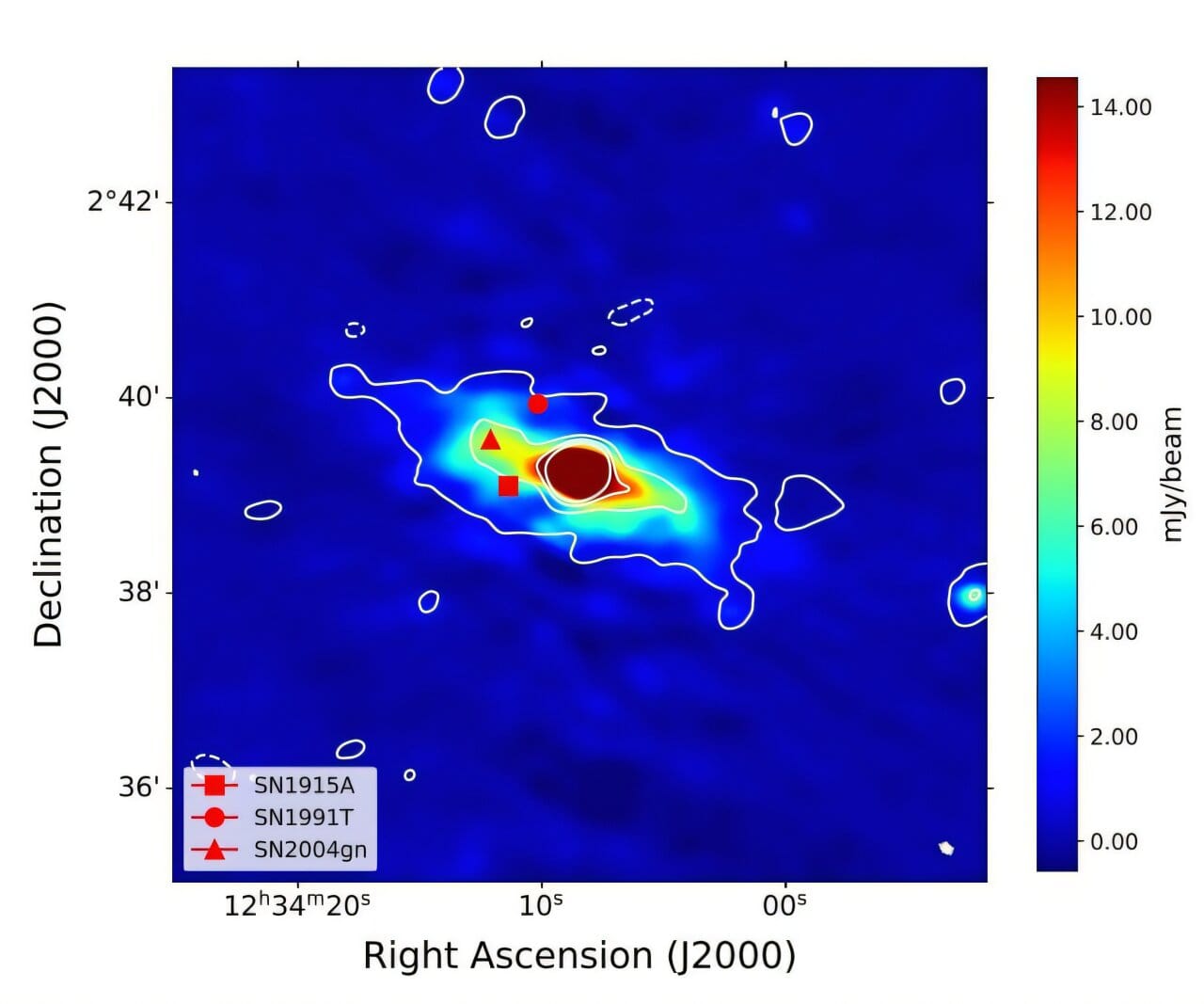In the far reaches of our galaxy, about 6,200 light-years away, a cosmic duet plays out in a stellar system both violent and beautiful. Designated 4U 1907+09, this X-ray binary system, first discovered in 1971, is once again under scientific spotlight—this time through the piercing eyes of NASA’s Nuclear Spectroscopic Telescope Array (NuSTAR). A team of Indian astronomers, led by Raj Kumar from the Bhabha Atomic Research Centre (BARC) in Mumbai, has used NuSTAR to probe deep into the enigmatic behaviors of this stellar system. The observations have unveiled new insights into the system’s unusual light patterns and the powerful forces at play, published on April 3 in the arXiv preprint repository.
What Exactly Is 4U 1907+09?
At its core, 4U 1907+09 is a supergiant X-ray binary (sgXB)—a cosmic pairing between a compact neutron star and a massive, hot, and luminous O-type supergiant star. In this celestial relationship, the supergiant isn’t a silent partner. It continuously sheds material in the form of a stellar wind, and the neutron star, dense and ravenous, accretes this material. This infalling gas doesn’t just vanish—it heats up to millions of degrees, emitting powerful X-rays detectable by specialized telescopes like NuSTAR.
The neutron star in 4U 1907+09 isn’t just any remnant—it’s a pulsar, spinning once every 444 seconds and emitting beams of X-rays like a cosmic lighthouse. These pulsations are the heartbeat of the system, and their precise timing allows astronomers to study the gravitational ballet between the two stellar giants.
Why 4U 1907+09 is So Intriguing
This system has long fascinated astronomers because of its unpredictable personality. Unlike more stable X-ray sources, 4U 1907+09 flickers and flares irregularly, alternating between bursts of brightness and eerie dips in light, sometimes lasting for minutes, sometimes for over an hour. These unpredictable “dips” and “flares” suggest that something complex and dynamic is at work in the accretion process—the way matter flows from the supergiant to the neutron star.
Until recently, the exact mechanism driving these changes remained elusive. Was the pulsar turning its emission on and off? Was material being obscured by clouds of gas? Or were we witnessing the physics of magnetism and gravity in a high-stakes cosmic struggle?
NuSTAR’s All-Seeing X-Ray Vision
NuSTAR is the first telescope capable of focusing high-energy X-rays, which are particularly valuable for probing dense, energetic regions like the vicinity of a pulsar. Unlike optical telescopes that collect visible light, NuSTAR detects X-rays in the 3–79 keV energy range—ideal for studying neutron stars and black holes, where temperatures soar and gravity warps space itself.
Over the course of this new observation campaign, NuSTAR monitored 4U 1907+09 during both its flaring (on-state) and dipping (off-state) phases. What emerged was a rich, high-resolution dataset revealing patterns previously hidden by older, less sensitive instruments.
Pulsar Still Slowing Down
One of the first discoveries from the new data was a more accurate measurement of the pulsar’s spin period: 444 seconds. This is slightly longer than the 437.5 seconds previously recorded, confirming that the pulsar continues to “spin down”—a gradual slowing of its rotation over time. This deceleration is typically caused by the neutron star losing angular momentum, likely through magnetic braking and X-ray emission. Each lost second is a whisper of the neutron star’s immense energy output.
A Complex Light Curve: More Than Just On and Off
The NuSTAR light curve—essentially a graph showing how the X-ray brightness changes over time—told a story full of twists and turns. During the dips, the X-ray flux plummeted to one-eighth of its normal on-state levels. Yet even within the on-states, NuSTAR detected flux variations as high as three times the baseline. This suggests that the source’s X-ray output is not simply toggled by an on/off switch but modulated by something more intricate—possibly the inhomogeneous stellar wind from the supergiant, or dynamic changes in the magnetosphere of the pulsar.
What’s particularly fascinating is that even as the brightness changed dramatically, the shape of the X-ray pulses remained largely consistent. This implies that the location and geometry of the X-ray emitting region didn’t vary much between flares and dips. In other words, the physical process producing the X-rays stayed intact, even if the input material—stellar wind—fluctuated wildly.
A Glimpse Into Magnetic Fields: The Cyclotron Line
Perhaps the most compelling discovery from the NuSTAR campaign was the clear detection of a cyclotron resonance scattering feature (CRSF) at 17.6 keV in both the on and off states. These features are formed when X-rays scatter off electrons spiraling around magnetic field lines near the neutron star’s surface. The energy of the CRSF allows astronomers to directly measure the magnetic field strength of the neutron star.
From this feature, researchers can estimate the magnetic field strength to be around 2 x 10¹² Gauss—about a trillion times stronger than Earth’s magnetic field. Intriguingly, the width of the CRSF feature increased with X-ray flux, suggesting that higher luminosities are linked to broader emission regions or more turbulent magnetic environments. This could hint at a dynamic magnetosphere that responds to changes in accretion rate.
Luminosity on a Galactic Scale
The measured X-ray luminosity during the on-state was about 2.85 × 10³⁷ erg/s—or 285 decillion ergs per second. To put that in perspective, this is more than 70,000 times the total luminosity of the Sun. Such immense energy outputs reinforce the idea that most of the X-ray radiation is channeled along the neutron star’s magnetic field lines, forming narrow beams that sweep across the sky like cosmic spotlights.
This focused radiation geometry is key to understanding both the pulse profile and the energy output. It also raises fascinating questions about the interaction between magnetic fields, accreting matter, and relativistic effects in the intense gravitational field near the neutron star’s surface.
What Does It All Mean?
The NuSTAR observations of 4U 1907+09 represent a significant leap forward in our understanding of how X-ray binaries operate. This system, long known for its irregular behavior, now appears to be governed by a surprisingly stable underlying mechanism—one that is periodically disturbed by variations in the inflowing stellar wind. The consistency in the pulse profile, the clear cyclotron line, and the high energy output all point toward a highly magnetized, structured accretion environment that remains intact even during dramatic fluctuations in brightness.
More broadly, studies like this are crucial for decoding the physics of extreme environments in our universe. X-ray binaries are laboratories for testing theories of gravity, magnetism, and nuclear physics under conditions that cannot be replicated on Earth. As telescopes like NuSTAR, NICER, and the upcoming Athena mission push the boundaries of sensitivity and resolution, we can expect more revelations from these cosmic heavyweights.
Final Thoughts
In the end, 4U 1907+09 reminds us that even in the void of space, drama abounds. This seemingly distant speck of light is actually a cosmic engine, pulsing and flaring with energies that dwarf the output of entire star systems. Thanks to NuSTAR and the sharp minds analyzing its data, we now have a clearer picture of the turbulent love affair between a dying supergiant and its remnant companion—a neutron star that spins, pulses, and waits, like a silent witness to the forces that sculpt our universe.
Reference: Raj Kumar et al, Variability study of classical supergiant X-ray binary 4U 1907+09 using NuSTAR, arXiv (2025). DOI: 10.48550/arxiv.2504.02791






